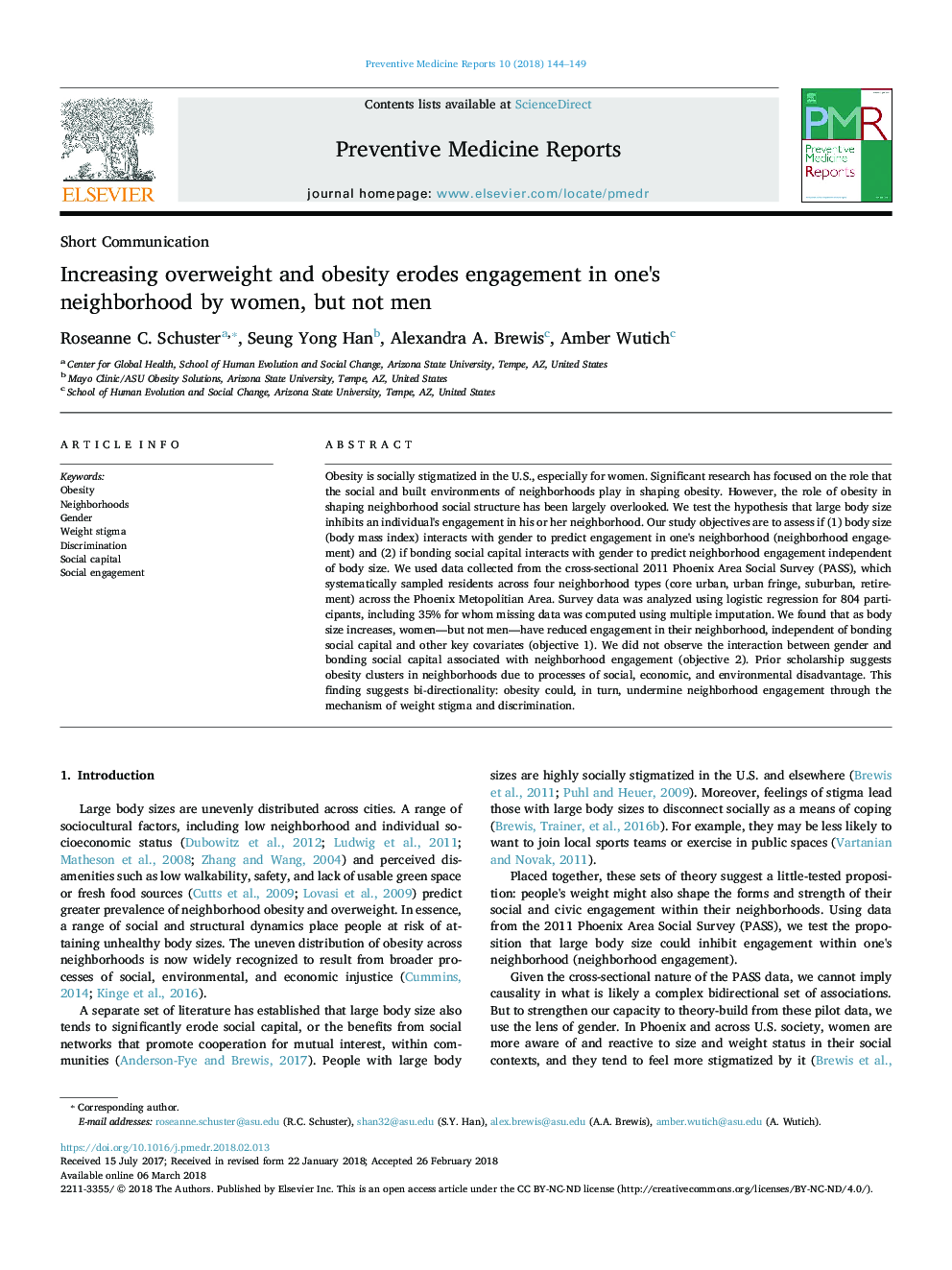| Article ID | Journal | Published Year | Pages | File Type |
|---|---|---|---|---|
| 8818639 | Preventive Medicine Reports | 2018 | 6 Pages |
Abstract
Obesity is socially stigmatized in the U.S., especially for women. Significant research has focused on the role that the social and built environments of neighborhoods play in shaping obesity. However, the role of obesity in shaping neighborhood social structure has been largely overlooked. We test the hypothesis that large body size inhibits an individual's engagement in his or her neighborhood. Our study objectives are to assess if (1) body size (body mass index) interacts with gender to predict engagement in one's neighborhood (neighborhood engagement) and (2) if bonding social capital interacts with gender to predict neighborhood engagement independent of body size. We used data collected from the cross-sectional 2011 Phoenix Area Social Survey (PASS), which systematically sampled residents across four neighborhood types (core urban, urban fringe, suburban, retirement) across the Phoenix Metopolitian Area. Survey data was analyzed using logistic regression for 804 participants, including 35% for whom missing data was computed using multiple imputation. We found that as body size increases, women-but not men-have reduced engagement in their neighborhood, independent of bonding social capital and other key covariates (objective 1). We did not observe the interaction between gender and bonding social capital associated with neighborhood engagement (objective 2). Prior scholarship suggests obesity clusters in neighborhoods due to processes of social, economic, and environmental disadvantage. This finding suggests bi-directionality: obesity could, in turn, undermine neighborhood engagement through the mechanism of weight stigma and discrimination.
Related Topics
Health Sciences
Medicine and Dentistry
Public Health and Health Policy
Authors
Roseanne C. Schuster, Seung Yong Han, Alexandra A. Brewis, Amber Wutich,
